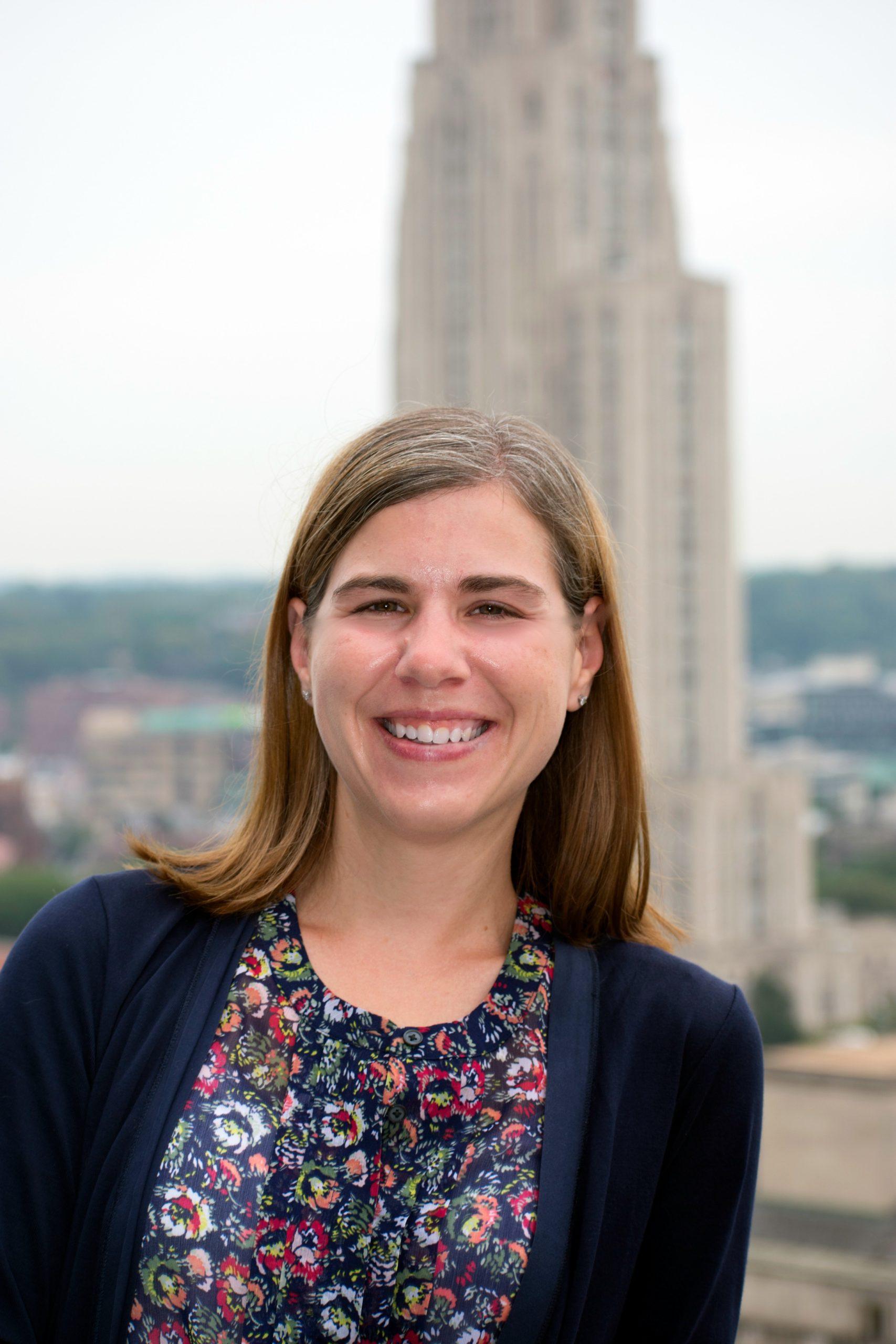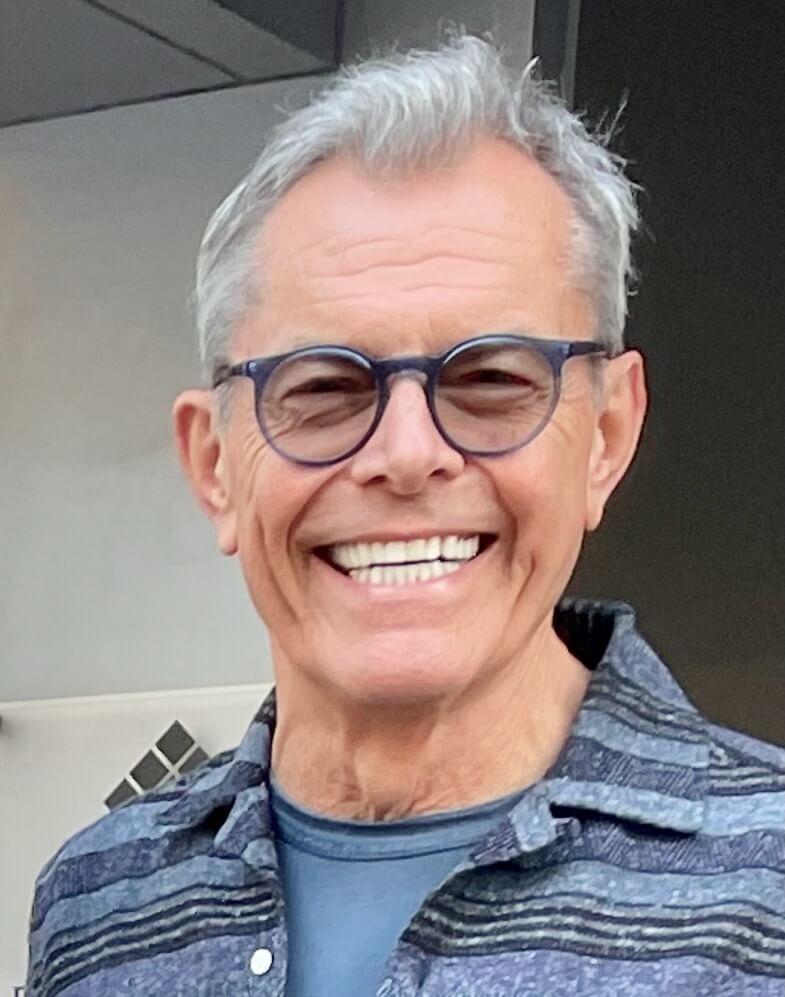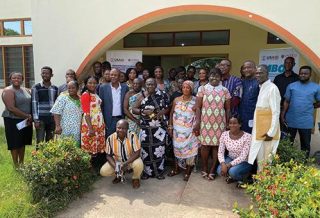FOCUS
Teacher leaders make change ideas stick
By Sara DeMartino, Glenn Nolly and Anthony Petrosky
Categories: Improvement science/networks, Mentoring & induction, Teacher leadershipApril 2023
Learning to use improvement science — a structured process for planning, implementing, and studying change efforts — takes time. That time is a worthwhile investment for schools aiming to shift teaching and learning, but it can be a barrier in schools that are often beset by leadership turnover. How can schools, and external partners like us, address that challenge and help improvement science efforts achieve their potential?
In our work supporting improvement in secondary school literacy practices, we at the Institute for Learning have discovered the power of teacher leadership to institutionalize knowledge, spread innovation, and maintain the momentum of improvement science efforts. When veteran teachers offer coaching, feedback, and follow-up to other teachers in their schools, they can help improvement practices stick (Hill & Papay, 2022). They also stretch and develop new skills that support their own professional growth.
Cultivating teacher leaders has become a key strategy for our work with a network of schools in Dallas, Texas. These leaders are helping put promising, sustainable change ideas into practice. Since those changes have gone into place, every school in the network has seen improved achievement.
About the network
In 2018, the Institute for Learning partnered with 14 middle and high schools in Dallas Independent School District to improve 9th-grade literacy, starting in 8th- and 9th-grade English language arts classrooms. The schools serve largely Hispanic and Black students, many from low-income families, and have a larger number of students with special needs than other schools in the district. Each school received a grade of C or D from the Texas Education Agency, based on factors including students’ scores on the state test and academic growth from previous years. As with other schools that have similar characteristics (Davis & Vehabovic, 2017), these 14 schools have a large number of early career teachers and high rates of turnover.
As a hub for the network, the Institute for Learning builds the schools’ knowledge and capacity both on improvement science and the instructional ideas to test. We start by engaging teacher leads from each school to understand the problem of practice and its root causes. We then engage leads in learning about instructional ideas that could positively impact the problem. The leads take the set of change ideas — which we call change packages — back to their schools and work with their teaching teams to adapt and test those changes.
At monthly network meetings, improvement leads initially experience the change ideas as learners, similar to how students would be asked to engage with instruction, to help them internalize the work. After they reflect on and discuss this experience, we ask the leads to share the strategies at their schools as a bridge to practice.
They engage their colleagues in the change ideas, help them reflect on what the instruction did for their own learning, and support them to implement similar instructional strategies in their classrooms. This shared engagement and reflection compels teachers to work together as they plan tests of change and builds a sense of shared ownership over making sure that instructional adaptations are effective for every student (McConachie & Petrosky, 2009).
During subsequent network meetings, the improvement leads share the experience of leading their peers in the work and learn from one another. Throughout this process, the improvement leads develop their mentorship skills. The importance of mentors to classroom teachers has been noted frequently in the literature on teacher development, particularly with early career educators (Odell & Ferraro, 1992; Wang & Odell, 2002), and we have seen that they are also important for implementing improvement science. They play key roles in making sure that critical features of an improvement culture and knowledge of instruction remain in schools when new teachers are brought into the process.
What mentoring looks like
Brad Dominy has been a teacher at Adamson High School for 23 years. Adamson is a large urban high school south of downtown Dallas. The school serves 1,500 students in grades 9-12. Most students at Adamson are Hispanic (94.8%), with 3.5% of students identifying as Black and 1% identifying as white. Ninety-seven percent of students are economically disadvantaged.
In 2018, when we began our improvement work, Adamson had earned a C rating, with 34% of students scoring proficient or above in English language arts on the state test (TEA, 2019). Just a few years after joining the network, Adamson’s performance improved to a B rating.
We met Dominy in 2018 at the first meeting for our network. He was teaching 11th-grade English language arts and co-leading the school’s English department. Dominy began his work as an instructional lead with our network because teaching and learning at Adamson had become stagnant. “We were maintaining, but we weren’t changing much,” he said. He believed that improvement science offered a way to understand what was causing the stagnation in student growth and develop and implement a plan that would lead to academic growth over time.
Dominy and his department co-lead worked with us during the first year of the network on a monthly basis, learning about improvement science, collecting artifacts related to our problem of practice, analyzing those artifacts, and working with his team to develop a diagram of the intended change process. He then worked with us to build his knowledge of high-leverage instructional practices, such as student-centered routines to support cognitively demanding tasks for complex texts, that he could bring back to the 9th-grade teachers at Adamson. He began implementing these change ideas with his team while also participating in network meetings and developing his own knowledge and skills.
In December 2021, three years after we began working with Dominy, we observed his coaching with three new 9th-grade English language arts team members, all new to the improvement work. Two were in the first few years of teaching.
Dominy asked our team to attend the meeting to help the Adamson team collaborate on planning a new instructional idea. In the first year of the network, teachers had noted that the curriculum did not provide students opportunities to engage with and make meaning of complex texts, and they posited that this could be a significant cause of the lack of academic growth. To shift instruction toward more cognitively demanding work, teachers collaborated to select relevant and engaging texts, develop open-ended text-based questions that get at big ideas, and sequence student-centered routines, such as quick writes, pair-shares, and charting, then invite students to use talk and writing to deepen their understanding of texts.
The Adamson team had selected the poem “Curanderismo” (Brown, 2020) for its complex ideas and relevance to the school’s largely Mexican student population. Dominy facilitated the planning by first asking the teachers to do the work they would in turn ask students to do, starting with composing a quick write to respond to the question, “What’s Brown saying in this poem?”
Over the next two hours, we explained, interpreted, and argued about the ideas in the poem and the content that was worth asking students to dig into. Dominy led the discussions and took notes. He asked the team to first understand the poem and what it offered, then to backwards plan: What was the final product that they wanted students to produce at the culmination of their work with the poem?
He then asked the teachers to think through the student-centered instructional tasks that needed to happen to deepen students’ understanding of Brown’s poem and support them to be successful with the culminating task. Rather than telling teachers what to do, Dominy facilitated the discussion using questions to get teachers thinking through the planning process — a process that he had experienced and reflected on at a network meeting.
By the end of the meeting, the Adamson team had created the framework for an instructional arc of tasks that would help students respond to an intellectually challenging prompt:
Arianna Brown, who wrote the poem “Curanderismo,” says that she is the “girl who washes herself with poems & finally gets to the therapist.” Sometimes people need to heal, mentally or emotionally, after difficult situations or life experiences. Think carefully about this statement. Write an essay explaining how people heal from mental or emotional pain.
Over the next several weeks, teachers implemented the work on “Curanderismo.” Dominy collected reflections and worked with teachers to make adaptations as needed. He also committed to visiting each classroom to help teachers track the impact the work had on students and provide some instructional coaching.
In reflecting on Dominy’s role as an improvement lead and mentor, one teacher said, “We’re learning the whole time we’re planning. [Dominy] pushes us to ask why, what’s the purpose of the work?” He said that it was satisfying to engage in the instructional design process, and added, “It’s a lot of work, but it’s worth it when you have the results in the classroom.”
The teachers at Adamson trust Dominy and the process because of the knowledge and commitment that he brings to Adamson’s collaborative planning meetings and the growth that teachers have seen in students’ learning as a result. He understands the students at Adamson and the conditions that created literacy deficits as well as the processes he has learned from participating in the network.
System of support
As the hub for our improvement network, we can help leads feel confident in their ability to build improvement capacity in other teachers at their schools. However, unless school leaders have created a system that supports the improvement leads to act as mentors, especially when the leads are not in an official position of power, they may not feel that they have the space to work with other teachers at the schools.
Dominy’s ability to mentor the teachers at his school didn’t happen by chance. School leaders created the conditions that empowered him to lead improvement work at the school. Adamson’s principal was thoughtful about who she invited into the initial conversations on improvement.
She selected Dominy because of his experience as a teacher and his investment in improving teaching and learning at the school. The principal also removed barriers in attending the monthly network meetings, which took place after school, by not scheduling other school meetings or professional learning at the same time.
Over time, the principal has made sure that representation at monthly network convenings is stable. Dominy has remained the improvement lead for five years. Though he does not teach the grade targeted in our improvement work, he’s been empowered to lead the 9th-grade teachers in inquiring into their practice.
To support him, the principal has found discretionary funds to pay 9th-grade teachers to attend professional learning community meetings after school that are dedicated to improvement work. School leaders frequently attend these meetings to develop their own understanding of the work that the 9th-grade team is undertaking and support the improvement efforts.
Identifying mentors
Dominy is not an anomaly in our network. Half of our network schools have one teacher who has become an effective mentor for new teachers at their school and in our network. We recommend that other networks employ a similar model of cultivating teacher leaders.
These mentor teachers — who typically opt into the work — tend to share a few characteristics that can be helpful when trying to identify teachers that could serve as mentors in the future. They demonstrate understanding of their school context, including who students are as people and as learners. They have deep content knowledge, which allows them to help new teachers blend improvement science and content-based instruction. They demonstrate a desire to improve teaching and learning at the school and the ability and willingness to take an inquiry stance and learn with and from other teachers.
If you have a teacher who demonstrates these characteristics, the next step is to empower that teacher to learn about improvement science, then work alongside that teacher to understand the identified problem in context, and finally to minimize the obstacles that might prevent that teacher from working with peers to improve the problem facing your school.
This process of cultivating leaders for change requires work, but with time and investment comes instructional expertise and an improved learning experience for students. For the first time since 2019, Texas released school grades for our network schools. Each school showed improvement over 2019. With support for improvement, we believe such changes can become the norm for many schools.
Download pdf here.
References
Brown, A. (2020). Curanderismo. In Sana Sana. Game Over Books.
Davis, D.S. & Vehabovic, N. (2017). The dangers of test preparation: What students learn (and don’t learn) about reading comprehension from test‐centric literacy instruction. The Reading Teacher, 71(5), 579-588.
Hill, H.C. & Papay, J.P. (2022). Building better PL: How to strengthen teacher learning. Research Partnership for Professional Learning.
McConachie, S.M. & Petrosky, A.R. (2009). Content matters: A disciplinary literacy approach to improving student learning. John Wiley & Sons.
Odell, S.J. & Ferraro, D.P. (1992). Teacher mentoring and teacher retention. Journal of Teacher education, 43(3), 200-204.
TEA. (2019). Texas Education Agency 2018-19 school report card W H ADAMSON H S (057905002). Author. mydata.dallasisd.org/docs/SRC/1819/SRC/201819_SRC_2.pdf
Wang, J. & Odell, S.J. (2002). Mentored learning to teach according to standards-based reform: A critical review. Review of Educational Research, 72(3), 481-546.
Categories: Improvement science/networks, Mentoring & induction, Teacher leadership
Recent Issues
WHERE TECHNOLOGY CAN TAKE US
April 2024
Technology is both a topic and a tool for professional learning. This...
EVALUATING PROFESSIONAL LEARNING
February 2024
How do you know your professional learning is working? This issue digs...
TAKING THE NEXT STEP
December 2023
Professional learning can open up new roles and challenges and help...
REACHING ALL LEARNERS
October 2023
Both special education and general education teachers need support to help...












